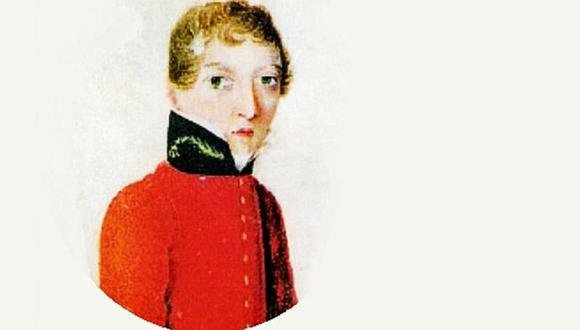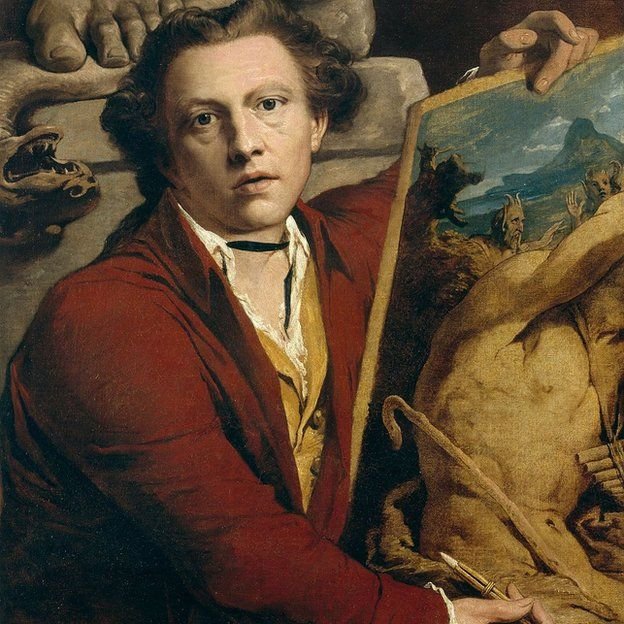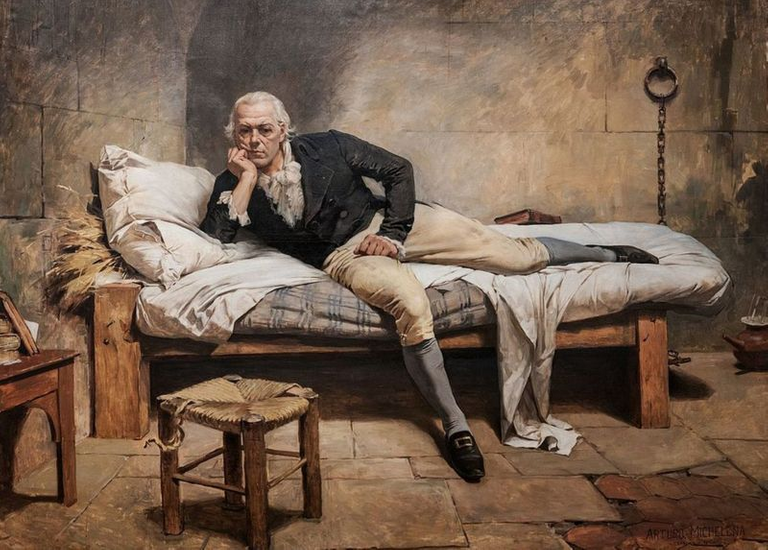Though painful, for those dealing with loss, death is a natural part of the cycle of life. And in that particular case it was an elderly man, with no descendants, whose close relatives had passed away before him. The celebrated Dr. James Barry, The celebrated Dr. James Barry, General Inspector of Hospitals in the Army of the British Empire, had died at the age of seventy-one and Sophia Bishop was, naturally, preparing the corpse for his funeral. But that July 25th of 1865, had an explosive surprise in store for the maid in charge of the mortuary work. On removing his clothes, Sophia discovered to her astonishment that the genitals on the body lying in front of her were those of a woman, who, from the stretch marks on the skin of her belly, appeared to have been pregnant in her youth. The surprised lady, before whom a secret kept for more than half a century was revealed, was the mother of nine children and recognized very well the traces of motherhood. But who was then, in truth, that famous, sullen and irascible character who had changed English military medical practice forever, and what other secrets were kept with her true identity?

Dr. James Barry when he was a young man. Mianuture of 1816. Fuente
Europa cambiaba demasiado despacio
Margaret era una chica despierta nacida, alrededor de 1789, en Cork, un pueblo costero de Irlanda que servía de puerto a las tropas británicas. Le tocó crecer en un mundo trastocado por dos revoluciones. La primera, iniciada en el verano del año cuando se cree que nació, suponía el cuestionamiento de un orden establecido por más de mil cuatrocientos años de hegemonía cristiana en Europa y estremeció los fundamentos del Estado cuando, al cortar la cabeza de su rey, los franceses cortaron también “el cordón umbilical con Dios”. La segunda revolución que marcaría los tiempos de Margaret no tiene fecha exacta de inicio, aunque hay quien encuentra su chispa en la invención de la máquina de vapor por James Watt, durante la década anterior a su nacimiento; pero la llamada Revolución Industrial haría, sin dudas, del siglo XIX uno de grandes cambios en todo sentido para Inglaterra, Europa y el mundo entero.
Pero estos cambios en el modo de vida, al ritmo de la producción fabril y la expansión de las ideas y los ejércitos republicanos, no supusieron mejora alguna para la vida de una joven provinciana de una ciudad portuaria irlandesa. Todo lo contrario, Margaret conoció la pobreza, después de un traspiés en los negocios de su padre, Jeremiah Bulkley. Y conoció también, abruptamente y con violencia, el terrible precio de ser mujer y pobre en aquellos “tiempos de cambio”, cuando uno de sus tíos abusó sexualmente de ella, dejándola embarazada. La difícil situación económica, enturbiada aún más por la “vergüenza familiar”, hizo que Mary Ann Bulkley, madre de Margaret, escribiera a su hermano James Barry para solicitar que recibiera a su sobrina en Londres y la pusiera bajo su cuidado. Aunque la desgracia de la joven Margaret era una más de las muchas que se acumulaban bajo la piel de aquella Europa, donde todo parecía seguir igual a pesar de los “grandes cambios”, el viraje de curso en el destino de aquella joven terminaría siendo bastante más radical de lo que suponía, al principio, abandonar para siempre su pueblo natal.

Europe was changing too slowly
Margaret was a wide-awake girl born, around 1789, in Cork, a coastal town in Ireland that served as a port for British troops. She grew up in a world shaken by two revolutions. The first, which began in the summer of the year when she is believed to have been born, questioned an order established by more than 1,400 years of Christian hegemony in Europe and shook the foundations of the State when, by cutting off the head of their king, the French also cut "the umbilical cord with God". The second revolution that would mark the times of Margaret has no exact date of beginning, although some find its spark in the invention of the steam engine by James Watt, during the decade before her birth; but the so-called Industrial Revolution would undoubtedly make the nineteenth century one of great changes in every sense for England, Europe and the entire world.
But these changes in the way of life, at the rhythm of factory production and the expansion of republican ideas and armies, did not bring any improvement to the life of a young provincial girl from an Irish port town. On the contrary, Margaret knew poverty, after a setback in the business of her father, Jeremiah Bulkley. And she also knew, abruptly and violently, the terrible price of being a woman and poor in those "changing times", when one of her uncles sexually abused her, leaving her pregnant. The difficult economic situation, aggravated even more by the "family shame", forced Mary Ann Bulkley, Margaret's mother, to write to her brother James Barry to ask him to receive her niece in London and place her under his care. Although young Margaret's misfortune was just one more of the many that were accumulating under the skin of that Europe, where everything seemed to remain the same despite the "great changes", the turn of course in the destiny of that young girl would end up being much more radical than what it meant, at first, to leave her hometown forever.

La velocidad que imprimen las ideas
El ambiente en casa de su tío James era muy distinto al de la estrechez familiar en Cork. James Barry era un pintor reconocido en la capital del impero, miembro de la Royal Academy of Arts de Londres y amigo de influyentes personajes con ideas revolucionarias para la época, ideas que parecían imprimir velocidad a aquel tiempo regido por vetustas y pesadas instituciones. Entre las amistades que frecuentaban a Barry figuraban David Stuart Erskine, onceavo conde de Buchan y defensor de la educación de las mujeres, así como un excéntrico americano llamado Francisco de Miranda, a quien Margaret escuchaba hablar de sus ideas sobre la independencia de la América Hispana, despertando en ella sueños de libertad, donde viajes y aventuras en el tropical terruño del revolucionario se enlazaban con el mayor de sus sueños imposibles: curar a las personas ejerciendo la profesión médica, un privilegio reservado solo para los hombres.
James Barry y sus amigos reconocían en la adolescente Margaret la inteligencia despierta y poderosa de las almas capaces de lograr lo imposible. Así que los tres, con la ayuda del médico Edward Fryer y el abogado de la familia, Daniel Reardon, urdieron un plan para que Margaret ingresara, disfrazada de hombre, a la Escuela de Medicina de la Universidad de Edimburgo. Solo este pequeño grupo de amigos, además de Margaret y su madre, sabían el secreto. Fue así como surgió James Miranda Stuart Barry (Margaret decidió tomar el nombre de su tío y el de los amigos que hicieron posible aquella locura), un joven de 14 años que, en 1809, iniciaba sus estudios formales de medicina siguiendo el llamado de su vocación.
The speed of ideas
The atmosphere at her uncle James's house was very different from the narrowness of the family in Cork. James Barry was a renowned painter in the capital of the empire, a member of the Royal Academy of Arts in London and a friend of influential people with revolutionary ideas for the time, ideas that seemed to give speed to that time governed by old and heavy institutions. Among Barry's friends were David Stuart Erskine, eleventh Count of Buchan and defender of women's education, as well as an excentric American named Francisco de Miranda, whom Margaret listened to talk about his ideas for the independence of Spanish America, sparking dreams of freedom in her, where travels and adventures in the revolutionary's tropical homeland were intertwined with the greatest of her impossible dreams: to heal people by practicing the medical profession, a privilege reserved only for men.James Barry and his friends recognized in the teenage Margaret the awakened and powerful intelligence of souls capable of achieving the impossible. So the three of them, with the help of medical doctor Edward Fryer and the family's lawyer, Daniel Reardon, conceived a plan to get Margaret, disguised as a man, into Edinburgh University Medical School. Only this small group of friends, in addition to Margaret and her mother, knew the secret. This is how James Miranda Stuart Barry (Margaret decided to take the name of her uncle and the friends who made that madness possible), a 14-year-old boy who, in 1809, began his formal medical studies following the call of his vocation, was born.
Pese a que Margaret rebajó considerablemente su edad (para justificar su escaso vello facial y la delicadeza de sus rasgos), mantener aquella mentira durante los años de su formación no fue nada fácil. Siempre usó ropa holgada y gruesos abrigos, botas con tacón más alto de lo normal y sobresuelas para elevar un poco más su metro y medio de estatura, además de cultivar un carácter fuerte y retador que confrontara a todo aquel que pusiera en duda su hombría, arrancando cualquier duda desde la raíz. El plan original era, una vez completados sus estudios, cruzar el Atlántico para unirse a Miranda en su revolución independentista y ejercer la medicina libremente, recuperando su identidad, lo que le aseguraba un lugar en la Historia como una de las primeras mujeres de la era moderna en ejercer esa profesión.
 Miranda en La Carraca, por Arturo Michelena (1896) / Miranda in La Carraca, by Arturo Michelena (1896) Fuente
Miranda en La Carraca, por Arturo Michelena (1896) / Miranda in La Carraca, by Arturo Michelena (1896) Fuente Although Margaret lowered her age considerably (to justify her lack of facial hair and the delicacy of her features), maintaining that lie during her formative years was not easy. She always wore loose clothing and thick overcoats, boots with higher than normal heels and oversoles to raise her five foot four inches, and cultivated a strong and challenging character that confronted anyone who questioned her manhood, nipping any doubts by the roots. The original plan was, once her studies were completed, to cross the Atlantic to join Miranda in his independentist revolution and practice medicine freely, recovering her identity, which assured her a place in history as one of the first women of the modern age to exercise that profession.But life rarely happens as planned and Margaret (or the young Doctor James) already knew that very well. In 1812, when she received her medical degree, Francisco de Miranda had been handed over to the Spanish authorities by a group of his compatriots, after the capitulation and collapse of the First Republic that he had tried to govern from his native Caracas. The american mentor of the young woman, veteran of so many battles and revolutions, was taken to the prison of La Carraca, in Cadiz, where he would die in 1816. So James Barry was at a crossroads. His choices were reduced to regaining her identity and with it giving up her vocation, acknowledging that she had obtained her degree under trickery, or giving up being Margaret and fulfilling her dream of practicing medicine, paying the price of living the lie of not being her (but "him"), depriving herself of feel and love as the woman she truly was and carrying the weight of a huge secret that would follow the mysterious Dr. Barry to his grave.
Hasta aquí esta primera entrega sobre la extraordinaria vida de Margaret Bulkley y el gran engaño al que tuvo que acudir para reformar el mundo de la medicina militar. En la parte final repasaremos sus viajes alrededor del planeta, los rumores acerca de un amorío con un funcionario influyente del Imperio Británico y las huellas de su trascendente legado, a pesar del silencio oficial que persiste sobre su verdadera identidad. ¡No te la pierdas!
¡Saludos, Hiveanos!
So far with this first part about the extraordinary life of Margaret Bulkley and the great deceit she had to play in order to reform the world of military medicine. In the final part we will review her travels around the planet, the rumors about a romance with an influential official of the British Empire and the traces of her transcendent legacy, despite the official silence that persists about her true identity. Don't miss it!Greetings, Hiveans!
The rewards earned on this comment will go directly to the person sharing the post on Twitter as long as they are registered with @poshtoken. Sign up at https://hiveposh.com.
Me ha encantado está primera entrega! Me sorprende la valentía de esta mujer para mantener tan grande engaño (y por tanto tiempo) con tal de alcanzar su sueño; un sueño que debió de saberle amargo por las circunstancias en las que se vio realizado y por el precio de renunciar a una parte de si misma con tal de alcanzarlo. Me causa curiosidad y admiración, y al mismo tiempo me indigna lo injusto de las circunstancias.
Me alegro de lo mucho que han cambiado los tiempos, aunque sé que esos cambios no fueron gratis y que se ha pagado un alto precio por ellos.
Espero emocionada la siguiente entrega de esta serie que nos presentas, para hacer un nuevo viaje al pasado y aprender cosas nuevas.
Me alegro mucho de tu regreso a la blockchain, @tupamalo.
Me encanta que te guste... La tuya es una de las opiniones que tengo muy en cuenta en estos andares. La emociones e impresiones que manifiestas me dicen que captaste la intención de cada palabra y eso me emociona mucho. El martes subo la segunda parte (ya en proceso de traducción). Gracias por tu valiosa lectura. Un abrazo.
Primera vez que escucho esta historia, pero suena muy interesante, ¿Tienes documentos que evidencien o respalden esta historia? No hablo de wikipedia.
Saludos... Aunque en la segunda (y última parte), la cual subiré el martes, está incluída una lista de referencias en línea y bibliográficas, ya que el artículo picó tu curiosidad (¡que maravilla, ese era el plan!), te adelanto un par por aquí para que tires del hilo si te interesas más. Gaacias por tu lectura.
Reportaje de la BBC: https://www.bbc.com/mundo/noticias-41337405
Artículo de la Dra. Martha Macho Stalder: https://mujeresconciencia.com/2017/02/28/el-medico-james-barry-o-la-sobrina-del-pintor-james-barry/
Artículo de la revista La Ciencia y El Hombre: https://www.uv.mx/cienciahombre/revistae/vol27num3/articulos/stuart-barry.html
Espero satisfagan tu curiosidad. Feliz domingo.
Después de un ¡Va mayuscula!, muchas gracias por las fuentes, las estoy mirando, una joya la verdad <3
Bastante interesante este dato histórico. Muy informativo tu post, saludos.
Wow que interesante historia cuanto secretos hay en el pasado. Que gran vida vivo Miranda sin desperdicio, excelente post @tupamalo
Así es, @devania... Miranda fue, quizás, el más universal de los políticos y militares que inspirados por la Revolución Francesa (y apoyados por la francmasonería) se propusieron cambiar el mundo. Gracias por tu lectura, en verdad la aprecio... ¡Saludos!
Sinceramente cautivadora la lectura, tiene algo que atrapa a lector! Te felicito
Muchas gracias... Acepto muy contento ese "piropo literario". Trataré de mantenerme a la altura 😄
Your post has been curated by us! Received 20.00% upvote from @opb. Do consider delegate to us to help support our project.
Do join our discord channel to give us feedback, https://discord.gg/bwb2ENt
* This bot is upvoting based on the criteria : 1. Not plagiarised, 2. Persistent previous quality posts, 3. Active engagement with other usersDo upvote this commment if you 💚 our service :)